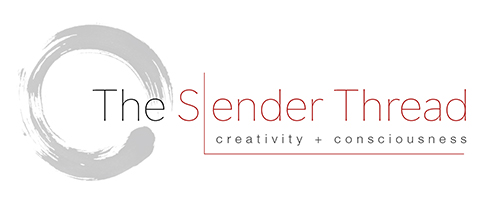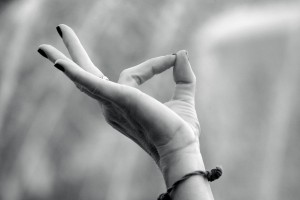After a recent yoga class, I felt the existence of subtle inner energies which formed a pervading warmth in the solar plexus, an opening of the heart, clarity of mind, and the exquisite lightness of being that, for me, only arises through some form of intensive inner work. In this case, the efforts and work of attention took place on the yoga mat. And, interesting to note, this awareness was found in spite of, or even perhaps assisted by, the presence of sharp pain and tension in my lower back and hips.
Before the class, I was browsing a Yoga Journal and was struck by one indisputable fact: everyone portrayed in the magazine looked so beautiful, so relaxed, and so very young and vital. I thought: is this what yoga offers, an overemphasis on the fitness and beauty of the body? Most of the people in my class were not particularly beautiful. Like myself, they were awkward, sweaty, gruntingly striving, and full of odd bodily tensions and idiosyncratic reactions. Yet, I was quite touched by their efforts and their genuine strivings towards alignment and inner opening. This class, all classes in fact, contain a kind of collective energy that transcends each individual. Attention begets attention and genuine striving begets genuine striving. In a class, the whole is always greater than the sum of the individuals. My effort helps you and visa versa. In this case, I felt a growing awareness that permeated myself and the atmosphere at once, that was technically in my body. It filled my body and the space around it—but was clearly not from my body. From this fleeting awareness—which felt in moments like the sun—I could see within and without impartially, regarding all things equally with equanimity and dispassion. What is the relationship between this form of awareness and our bodies? This question has haunted me for years.
In a long-term yoga practice, the process of self-inquiry begins in the body. As we work with unfamiliar asanas, the body speaks loudly. It compels our attention through pain, tension, and the sheer awkwardness of the effort. This so-called awareness is still partial and still automatic, not steady or governed by our conscious intent. Yet we can watch the pain come and go. As we start to relax into the body, the pain generally starts to dissolve. More precisely, our identification with the pain starts to dissipate, and what we once considered to be a good sensation or bad sensation becomes merely sensation. We begin to be able to exist more completely in the moment of what is happening.
The initial purpose of yoga is stated as stilling the mind. We can come into the body and experience/observe its manifestations—it is tangible and stable. But it is much more difficult to observe the thoughts and feelings. They tend to capture our attention and take us far away from the present moment. As time goes on, our practice can be more fully linked to breathing. As we watch the breathing, we begin to see that my body is not me. It is not my breath. I am being breathed. From this standpoint of cultivating a separation of the observer with the observed, we can begin to see, in the moment, the nature of our thoughts and feelings. We watch ourselves from the inside out. Seeing without seeing. Seeing not with the eyes.
What is observable is therefore not me, but still me at the same time. We strive to come into the body, yet at the same time, we recognize that an over-identification with the body—or with such ego-investments as fitness or attractiveness—impedes our true estate, our real attention from which genuine individuality may grow.
“The body is necessary, but it is not the most important thing. It must obey something else. In fact, the body wants and likes the contact with energy that comes from above… One must liberate the subtle body from the prison of the habits of the ordinary body. The important thing is the real I, which is independent of the physical body. But the body is very necessary because the higher energy needs the body in order to manifest itself. … The conscious response or attention, which arises from the me, which is personal, serves as a thread for connecting the I and the me. The I is not personal.”
—Jeanne de Salzmann
Over the course of our lives, we learn many useful and valuable lessons. We learn to read and write, to cook, to drive, to participate in the complex demands of our occupations, to make love, and to raise our children. We may learn to play the cello or the guitar, and we participate in sports and recreational activities. Many of us study diet, nutrition, traditional and alternative methods of healing, and techniques for achieving a state of glowing health and maximum well-being.
But when do we learn to listen to our bodies?
We exercise, do yoga, jog, and engage in varied physical activities, mostly for the purposes of enjoyment, physical fitness, and to release pent-up energies. We study the body and the means toward increasing our vitality, longevity, and level of fitness. We view physical pursuits as beneficial to our bodies and minds. To some degree, we value ourselves and others based on one’s overall health and attractiveness, and we often equate athletic prowess, endurance, and sheer physical ability with the body’s intelligence.
But when do we learn to inhabit our bodies?
A true connection with the energies of the body is not necessarily causally related to ability in athletics, physical fitness, grace in movement, or freedom from medical conditions. While these factors may result as a by-product of a greater organic awareness and a deepening attention to the body, they are not the desired goal of our strivings. The ultimate aim of engaging and turning toward the energies of the body is growth of being and understanding. We talk about a moment of awareness as a “coming to our senses.” The literal meaning of this phrase, as I understand it, is the coming home, returning to our field of being, and the moments of widened perception that arise from this action.
Inhabiting the body brings a greater sense of presence, unmistakable in one’s experience of self and inwardly recognizable in others.
Laura remembers a Sanskrit phrase, that translated means, “not this body, not this mind.” I am not this and not that, so then what am I? I need to bring the mind and body together, experience the resonance of the body’s sensation, and witness the ranging thoughts and associations with the mind. But what is my standpoint? Who is the seer?
We have an awareness, a perception of the silence behind sound, behind manifestation, that can be found, sensed in a distant way amidst our noisy mind. A finer vibration. Can we seek to find it… ?
“I begin to see what I habitually call “I” and to recognize that by myself I am nothing. At the heart of this humility there is a feeling that comes from the higher parts of myself and appears like a light, an intelligence, and with it confidence. … I no longer intervene and a silence comes by itself. In this silence, an unknown energy is revealed and acts on me. Consciousness is here. It does not need to have an object. Although it makes me aware of my body, in these impressions it is not my body, but the light of consciousness that is perceived. It reveals what I am and what the things around me are.”
—Jeanne de Salzmann



Hello! Just want to say thank you for this interesting article! =) Peace, Joy.